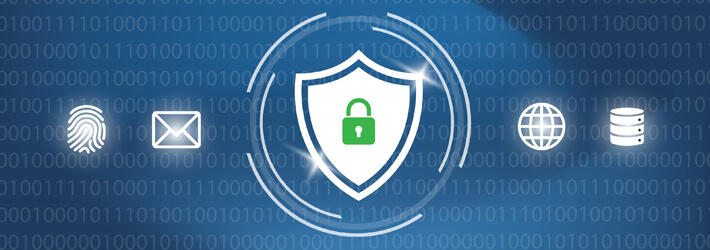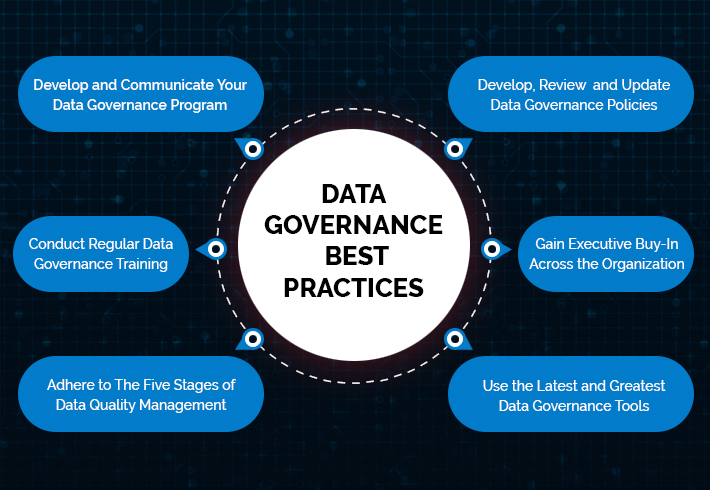
What is a Data Governance Framework?
A data governance framework is a set of rules, processes, and responsibilities that govern how an organization collects, organizes, stores, and uses its data. Its primary goal is to ensure data quality, integrity, and security by establishing a standardized approach to data management.
Without a data governance framework, organizations may struggle to ensure data quality and compliance with privacy regulations, leading to potential legal and reputational damage.
A data governance framework enables data democratization, allowing employees to access and act on data, and facilitates standardization and trust in data across the organization.
A data governance framework will also provide a set of guidelines for labeling different types of data, including creating a shared data dictionary to ensure consistency across teams and a tracking plan to avoid inconsistencies and duplicate entries.
6 Data Governance Best Practices
By adhering to the following six data governance practices, organizations can eliminate data silos, improve data quality, and ensure compliance with regulatory requirements, ultimately leading to better decision-making and business outcomes.

1. Develop and Communicate Your Data Governance Program
A data governance program can help to overcome potential data governance obstacles such as limited resources, resistance to change, and lack of understanding. The process will involve effectively communicating the value and benefits of the program, providing training and support, and involving key decision-makers in the planning process. A data governance program can unlock measurable business value from your organization’s data assets, while also ensuring data quality and integrity throughout its lifecycle.
2. Develop, Review and Update Data Governance Policies
A data governance policy is a set of guidelines that outlines the rules and standards for managing, handling, and protecting an organization’s data. It ensures data accuracy, consistency, and security across the organization, and defines the roles and responsibilities of personnel involved in handling data. The policy outlines protocols for data collection, storage, processing, and disposal, and aims to improve data quality, enhance data security, and ensure compliance with regulatory requirements.
Regularly reviewing and updating governance policies is crucial as outdated policies can lead to inefficiencies, conflicts, and legal issues. Governance policies serve as the foundation for an organization’s structure, operations, and relationships with stakeholders. Regular reviews and updates ensure that policies remain relevant, aligned with changing regulations, and reflective of the organization’s evolving goals and priorities. Additionally, reviewing policies promotes transparency, accountability, and inclusivity, as it encourages stakeholders to provide feedback and participate in the policymaking process. Through regular reviews and updates, organizations can also identify and address potential gaps or vulnerabilities, thereby minimizing risks and ensuring a more resilient governance framework.
3. Conduct Regular Data Governance Training
It is crucial for all employees and executives to possess the skills to effectively understand, interpret, and use data to make informed decisions. This requires a fundamental understanding of what data is, its various applications, and the processes involved in collecting, storing, and managing it. Additionally, learning how to work with data, including the use of visualizations, summaries, and descriptive statistics, is essential to effectively communicate insights and findings. Additionally, it is vital to recognize the limitations and appropriateness of data, as well as its potential biases and errors. By acquiring these skills, individuals can gain a deeper understanding of their role in safeguarding an organization’s critical assets.
4. Gain Executive Buy-In Across the Organization
To successfully implement a data governance strategy, it’s essential to gain executive buy-in across the organization. This involves not only demonstrating the benefits of data governance, such as solving specific pain points and improving business outcomes, but also aligning it with the organization’s shared goals and objectives. A production pilot project can be a key influencer, as it allows for tangible results to be presented early and often, and highlights the long-term importance of these wins. Once initial support is gained, it’s crucial to maintain it by building trust and actively engaging executives through shared input and feedback. This enables them to feel a sense of ownership and commitment to the program. Data Governance is not just a technical issue, but a cultural and organizational change that requires buy-in from everyone in the organization.
5. Adhere to The Five Stages of Data Quality Management
Data quality management is crucial for organizations to make informed decisions and drive business growth. To achieve this, five stages of data quality management must be implemented.
- Stage 1 – Migrate data to consolidate silos: Consolidate data from multiple sources into a single system to get a holistic view of your data and identify gaps.
- Stage 2 – Validate your data: Implement real-time validation tools to prevent bad data from entering your system and ensure accuracy and consistency.
- Stage 3 – Enrich your data: Combine internal and external data sources to make your data more detailed and valuable.
- Stage 4 – Build and leverage a single customer view: Create a single, unified customer view by combining data from various sources to inform business strategies and marketing efforts.
- Stage 5 – Routinely cleanse your data: Regularly review and update your data to ensure accuracy and relevance, and implement automated solutions to make this process efficient.
6. Use the Latest and Greatest Data Governance Tools
Data governance tools are essential for managing and maintaining data quality, integrity, and security throughout its entire lifecycle. Such tools enables organizations to discover, capture, and catalog data, as well as manage metadata, ensuring that data is properly tracked and protected from the moment it is created. Data governance tools also provides access control and data ownership capabilities, streamlining the daily tasks of the data governance team. With advanced self-service tools and visualization, users can easily monitor and report on data usage, making it easier to identify potential issues. Look for solutions that allow for automated tracing of data sources and changes, provide a clear audit trail, and automatically apply data governance rules, ensuring compliance with regulatory requirements.
Related Articles:
How Lepide Helps
The Lepide Data Security Platform plays a crucial role in ensuring data governance by providing a comprehensive solution to monitor and manage sensitive data. The platform can detect and respond to unauthorized access, suspicious changes to sensitive data, and reverse any excessive permissions that may have been granted. The platform sends real-time alerts to administrators when anomalous activities occur that may indicate a potential security threat. With its comprehensive range of pre-set reports, the Lepide Data Security Platform enables organizations to tackle common security and data access governance challenges, helping to maintain data integrity and ensure compliance with regulatory requirements.
If you’d like to see how the Lepide Data Security Platform can help to establish a robust data governance program, schedule a demo with one of our engineers.
